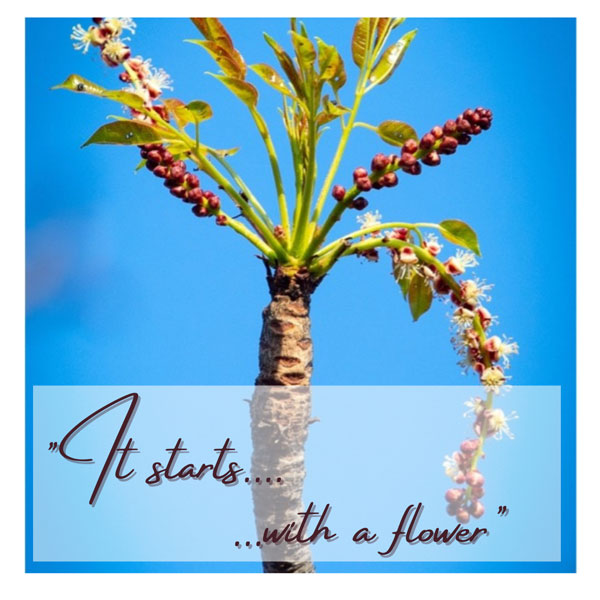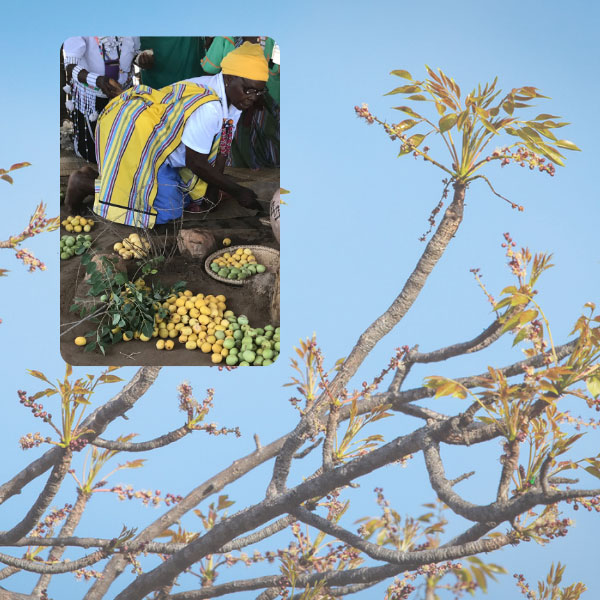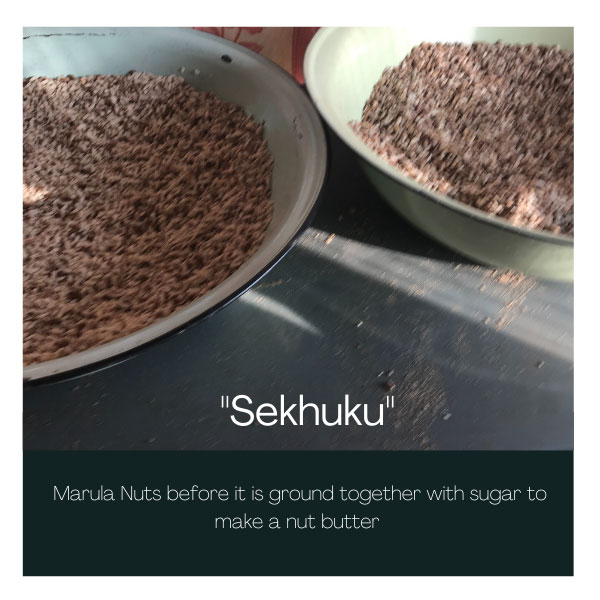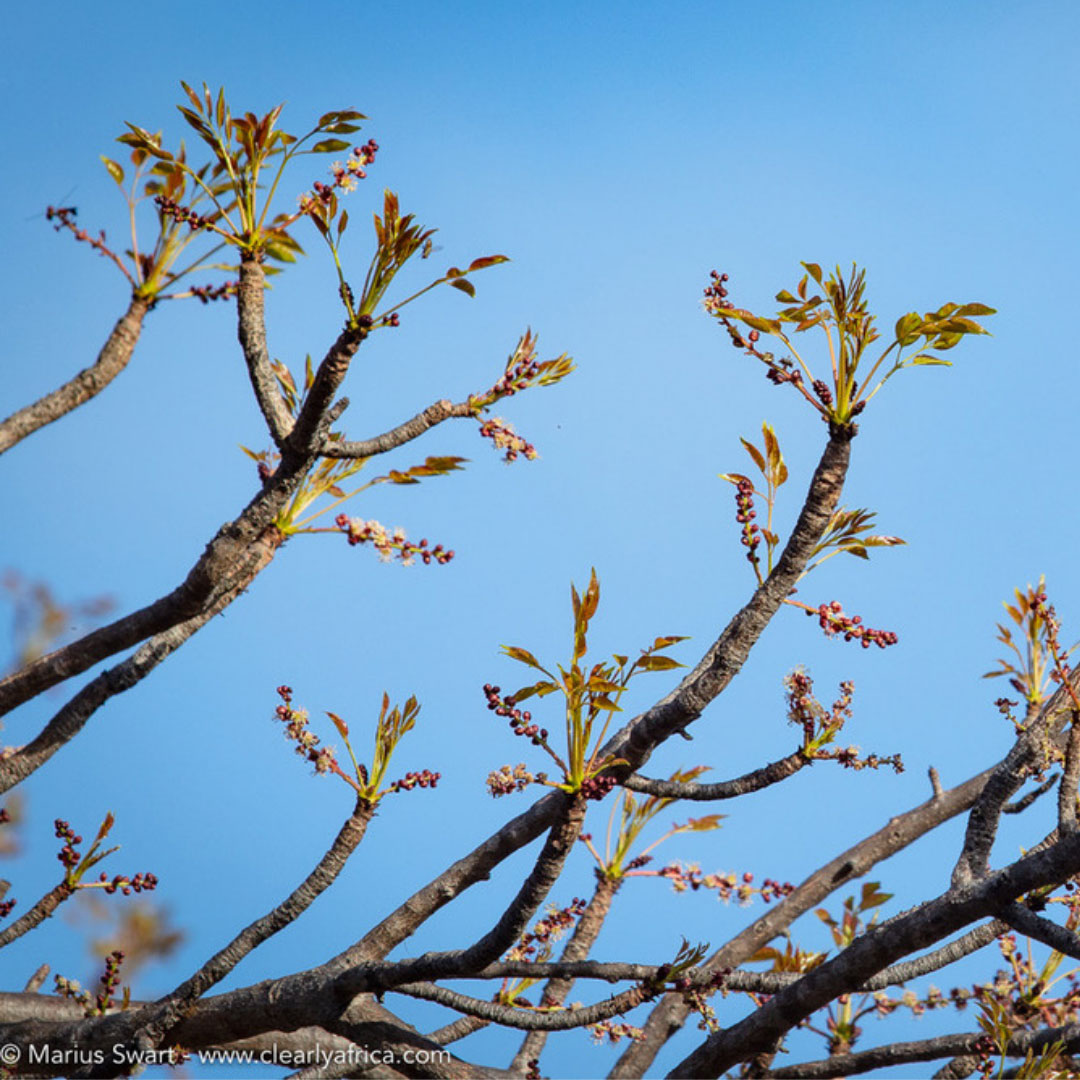Here in the Lowveld in South Africa, October is known as the “dustbowl” of the year. 1 September is officially our Spring day, but we normally have very little rain then. In October the temperatures are climbing into the high 30’ Degrees Celsius and often into the low 40’s.
It’s hot, dry, dusty, not comfortable and not pretty either. Almost all the trees have lost their leaves, the grasses (if there are any) are dried out with animals losing condition quickly. It’s a sad thing to see the impala ewes with their skinny yet pregnant bodies trying to survive until the rain comes in November and they normally drop their babies.
And then, out of the blue came the rain. We’ve had 112mm since the beginning of October. And within a week the Bush has completely turned around. There are green shoots everywhere. Grass, plants and trees are making full use of this unexpected gift. Insects are out and about, and the birds are going crazy.
Marius and I took a little drive around the reserve. It’s always interesting to drive around with him. As a professional safari Guide he has a ton of information in his head, but he also truly loves spending time in the bush. A lot of that is quiet time without talking. Just observing, watching and being aware of what is going on around you. It’s a lot like meditation but with fun subjects!
While we are driving around, he is constantly stopping, getting out of the vehicle and taking pictures of things I don’t even notice. He has a completely different way of looking at things and his situational awareness is something that always amazes me.
At one of these stops he got out to take a picture of a flower of a marula tree. I was surprised by this as in all honestly, I’ve never really thought about what a Marula flower looks like. The trees are normally big, and you don’t notice the tiny little flowers at the very tips of the tree tops.
This made me feel a little guilty. In Phalaborwa, where we live, Marulas are a really big deal. Most of Limpopo Province and further up towards Namibia, Botswana, Zimbabwe and Mozambique all have Marula trees but here in the Valley of the Olifants the Marula tree has enormous cultural and economic value.
In February when the fruit start falling from the trees, the older ladies in the community start walking around collecting the fruit in big bags carted around with shopping trolleys
These bags are then collected at a designated spot and either sold to a local factory that make a world-famous liqueur or taken to their homes.
At Home the fruit is sorted. The good quality fruit are turned into anything from Juice to beer or Jam and Atchar. The not so great ones are left to rot and dry out after which the nuts are taken out to either be used in cooking or turned into a Nut butter or sold to another factory that makes essential oils from the Marula Nuts.



The Marula tree is a cultural symbol of fertility and good fortune to the local Ba-Pedi and Tsonga tribes and in the old days couples would get married under it to help bless their marriage. Even to this day the Marula trees are protected by the Tribal Authorities and it is illegal to cut them down or damage them.
Every year, Phalaborwa has the annual Marula Festival. When thousands of people flock to town to taste the traditional beer and take part in the festivities.
And it all starts with a little flower.
That tiny little flower that for thousands of years have been quietly growing, season after season has sparked an entire culture.
Sitting there quietly in the Vehicle looking up at this tree, for the first time I saw the entire picture. The Bees and insects buzzing around these tiny little flowers, pollinating and making sure that the flower turn into a fruit that supports so many people.
During the last few months I’ve felt frustrated, heartbroken and helpless. I’ve wanted to help but didn’t know how when things are so completely out of your hands. I settled on helping stranded Tourists where we could and sharing verified information to those in our local Industries. I still felt like it wasn’t enough. I was seeing others doing so much more and I wished I could help more, while also trying to cope with the devastating impact of the Pandemic on our own lives. Both Marius and I had lost all our bookings and contracts until next year, with no chance of anything changing before then.
And then we started getting help from unexpected places. Friends, family, previous guests all helping a little here and there. Marius had the time to get his own website up and running and managed to sell a few of his pictures and somehow, we are surviving.
Last week I heard a quote by Ronald Reagan: “You can’t help everyone, but everyone can help someone”
Sitting there looking at that tiny flower I realised that even something as seemingly insignificant as a bee is helping someone. That small bee, going about his normal business without doing anything extraordinary, makes all the difference to that flower. And that flower turns into a fruit, which by itself doesn’t mean much but as a collective have supplied generations of people and animals with sustenance and entertainment and income.
No matter what you do, know that you are a piece in a bigger picture and that we, as a collective, have the power to change the world, by just helping someone else.
In this personal journey of discovery, I’ve had these last few months and with this new awareness, it has given me the clarity that I don’t need to take over the world.
I just need to help someone.
I just need to start with a little flower.
Marilda Wiegand


Recent Comments